#sickle cell anemia
Text
Malaria, Sickle-Cell, and Dragons in the Temeraire Universe
so I've been thinking about sickle cell all day because of the very cool real-life FDA crispr treatment approval news, and also I'm just about done rereading empire of ivory so thusly it is time to write the sickle cell/malaria/dragons/benefits of human-dragon mutualism breakdown I mentioned ages ago.
Standard disclaimer that I am not in fact anywhere near an expert on this, this is mostly recall from ANTH 102/215 classes I took five years ago, the info is very simplified and possibly somewhat out of date. I'm doing some quick checks and I write this but only enough to make this an appropriate fantasy novel fandom post, not enough to make it actually reliably informative. I do have a couple citations, but mostly for the parts I'm lifting straight out of a class assignment I wrote, and they're a short documentary hosted on YouTube and the textbook for the class. also none of my links are live because I want this fandom post to actually show up in the fandom tag lol.
second disclaimer is I'm starting at the basic obvious stuff because I genuinely have no idea how much most people know about this and better safe than confusing.
Intro and Background
So the first thing to know about any of this is that human genetics for the most part to not operate on mendelian inheritance. So the punnet squares in high school biology that did human hair or eye color as basic dominant/recessive one-gene traits were totally lying to you. Like they're a teaching tool for a very simple model that works well enough but they're not accurate. Most human phenotypes are way way more complicated genetically than that.
That said, there are exceptions. Mendelian traits (Characteristics that are influenced by alles at only one genetic locus) do exist in humans, a number of them being related to genetic diseases. The list in the ANTH 102 notes I just dug up was: Wet (dominant) or dry Earwax; Albinism; Brachydactyly (dominant); Blood type (ABO, not the positive/negative part); Hereditary breast-ovarian cancer syndrome (BRCA-1, BRCA-2, unknown genes); Huntington’s disease; Lactase persistence (dominant); and Sickle-cell disease (recessive).
So the sickle cell punnet square looks like this for two parents who both have one copy of the sickle cell gene:

Sickle cell is a very painful and life threatening disease, (That's why the FDA approving a crispr treatment for it allowing patients to be their own bone marrow donors is very exciting.) and from an evolutionary perspective, one that very often prevents people from reproducing. It's also not strictly dominant/recessive, in that people heterozygous for sickle cell can have some symptoms like the possibility a sickle-cell crisis triggered in low-oxygen situations (high altitudes, intense exercise, etc).
So one might think that Sickle cell would be a vanishingly rare disease, since having it can be deadly and even having the trait can in some cases cause problems. Only it's not rare by genetically inherited disease standards, not at all.
And to make a long story very short, the reason is malaria.
Malaria
People who are heterozygous (possessing one sickle cell gene and one normal gene) for sickle cell anemia are resistant to malaria. In areas of the world without a high incidence of malaria historically, there is a strong selection against the sickle cell gene, (Biointeractive Malaria and Sickle Cell Anemia, 9:33) but in areas with malaria, both having sickle cell disease (homozygous HbSS) and not having the trait at all (homozygous HbAA) are selected against. People with sickle cell were historically less likely to reproduce, and people who were not resistant to malaria were more likely to die of malaria and also not reproduce. Because being heterozygous with sickle cell is selected for, the gene persists in the population.
The implications of that are best summed up from this map that I just stole from Britannica.com:

I dunno if the percentages on that second one are accurate tbh, other infographic maps I'm looking at give different ranges. but sill, you get the gist about how common it is in equatorial Africa. In the modern United States Black children are much much more likely to be born with sickle cell than white children—the genes don't just go away when the threat of malaria is removed. (And yeah, that's a historical consequence of the slave trade.)
There's some other stuff wrapped up in here too about bio-cultural evolution: There's indications that malaria was not a “significant problem until humans abandoned food foraging for farming” (Haviland, W. A., Prins, H. E., Walrath, D., & McBride, B.). Humans cleared away the forest, which had kept the soil absorbent. Without the vegetation, more water built up on the surface, forming stagnant puddles which were a perfect environment for malaria-causing mosquitoes to thrive, thus creating the conditions for sickle cell anemia to be advantageous. Farming creates caloric surplus which is great for humans, but it also changes the environment in ways that can be detrimental. Malaria is one way, creating the conditions for other epidemic diseases to thrive is another, etc. etc.
But if you've read this far you're probably going "Chi, you promised this would be a fandom post but so far this has been a serious and kind of sad post about disease. when are you going to get to the dragons?"
The Dragons
So the first time malaria comes up in the Temeraire books is in Throne of Jade, when a bunch of the sailors on the Allegiance come down with "malarial Fevers."
Jane, I must ask you to forgive the long gap in this Letter, and the few hasty Words that are all by which I can amend the same now. I have not had Leisure to take up my pen these three weeks—since we passed out of Banka Strait we have been much afflicted by malarial Fevers. I have escaped sickness myself, and most of my men, for which Keynes opines we must be grateful to Temeraire, believing that the heat of his body in some wise dispels the Miasmas which cause the ague, and our close association thus affords some protection.
But we have been spared only to increase of Labor: Captain Riley has been confined to his bed since almost the very first, and Lord Purbeck falling ill, I have stood watch in turn with the ship’s third and fourth lieutenants, Franks and Beckett. Both are willing young men, and Franks does his best, but is by no means yet prepared for the Duty of overseeing so vast a Ship as the Allegiance, nor to maintain discipline among her Crew—stammers, I am sorry to say, which explains his seeming Rudeness at table, which I had earlier remarked upon.
I do not know enough about what people thought about malaria in the 19th century to be 100% sure that this is actually malaria, but I think Novik wouldn't want to confuse her readers by calling something malarial that isn't you know..malaria. So I'm going to assume thats what it is. Google is not giving me figures on malaria survival rates before modern medicines for it which is driving me kind of nuts and means I can't say how lucky Riley and Purbeck were to survive with apparently no complications, but that's not the point here anyway. The point is the comment about the aviators not getting sick.
And not only (mostly) not getting sick, but not getting sick even though they aren't actually always near Temeraire. Laurence for example has been working watch shifts near constantly because he's the only one left on the ship who knows what he's doing. That means probably less read & cuddle time than is normal for him and Temeraire, and yet—no malaria.
We modern readers (and Novik) know that malaria is not caused by "miasmas" but by parasites carried by mosquitos. And lo and behold when we get to Empire of Ivory we get:
Mosquitoes sang happily as dusk drew on, though they did not come very close to Temeraire; the flies were less judicious. The shapes of the trees were growing vague when Temeraire woke with a start and said, “Laurence, there is someone coming, there,” and the grass rustled on the opposite bank.
So yeah, the dragons are keeping the mosquitos away. I know fuck all about why—it's probably not heat since you know, mosquitos like warm blooded organisms, but maybe it's an oil or a chemical or some artifact of the way some of them can breathe fire that's present in all dragons or something, they're described as smelling weird a few times, so who knows. If it's a substance like an oil in their skin that could explain why the aviators don't get sick even when they're not nearby, since they could have some on them from contact, but that's just speculation. The point is not the mechanism, just that it's happening.
The Point
This whole post grew out of a throwaway comment I made about the benefits of mutualistic symbiosis with dragons from the human perspective in that one post about how the series has some interesting stuff obviously going on psychologically/biologically. The point of going in-depth on malaria and sickle cell is to show how this is really impressively solid worldbuilding in relation to the Tswana.
See, Empire of Ivory describes locations that seem like they're in modern day Botswana, Zimbabwe, and Zambia, regions which will have had long-term problems with malaria-causing mosquitos. That's not the densest area for sickle cell, but still definitely in the region where malaria would have exerted selective pressure.
Selective pressure which, in a universe where just being around a dragon is going to drastically reduce malaria rates, is going to leave dragon-friendly populations a lot healthier than dragon-unfriendly ones. A community that has a dragon stay every night and work alongside humans during the day is going to have a lot less malaria even without the sickle cell resistance than a community which has no dragon. And considering that malaria is bad enough that sickle cell genes persist despite it also having a high chance to cause a deadly disease, whereas a dragon that's a fully prosocial member of the community is not going to cause more death and instead will probably help with defense and create more caloric surplus (at the cost of consuming most of that surplus) a dragon is just obviously the better option. From there, it's extremely easy to see how the Tswana in the series could develop such a dragon-centric culture and have it be so wildly successful. The dragons provide fertilizer, the dragons allow for fully domesticated elephants, and the dragons render malaria—one of the deadliest diseases in history—nearly a nonissue. Of course they're family.
Citations:
Biointeractive. (2014, August 26). Malaria and Sickle Cell Anemia - HHMI BioInteractive Video. Retrieved October 3, 2018, from https://www.youtube.com/watch?v=Zsbhvl2nVNE
Haviland, W. A., Prins, H. E., Walrath, D., & McBride, B. (2017). Anthropology: The Human Challenge (15th ed.). Boston: Cengage Learning.
#Temeraire#it’s more bio-cultural evolution#wikipedia claims that malaria may have killed 50-60 billion people through history but I do not trust that citation AT ALL#regardless its still one of the deadliest killers ever#the kitten rambles#malaria#sickle cell anemia#Artemis if you read this I am sorry for the butchering I made of some anthropology concepts
95 notes
·
View notes
Text

I do my best to post my views as a scientist, not one who is indoctrinated into believing in pseudoscience, the false ideology that skin colors represent race for humans. The very word negro irks me because negro is demeaned in such a negative way, instead of blanco in Spanish.
Negro means "Black" in the Latin language and blanco means "white" in the same language, so why isn't blanco demeaned the same way as the word negro? Dark skin humans need to start defining themselves and stop following the narratives and the negative stereotypes of people who identify themselves as white.
Dark skin humans are a product of natural selection, a process better understood by the meaning of photosynthesis. Which means how every living thing on earth interacts with our sun.
Pale or fair skin humans are a mutation from dark skin where the UV-Radiation level is low. The same can be said about Sickle Cell Anemia, which I hear as being called out as a Black people's disease, when skin color again don't have a damn thing to do with the cause of Sickle Cell Anemia.
Evolution is a wonderful thing and how all living these adapts to our environment to protect itself from deadly diseases like Sickle Cell Anemia. Sickle Cell Amenia is associated with malaria, which is caused by a heavy population of mosquitoes, particularly a specific type of a female mosquito, in theory.
The human body protects itself from malaria by the cells becoming sickle to prevent malaria; therefore, people with Sickel Cell Anemia is immune to malaria.
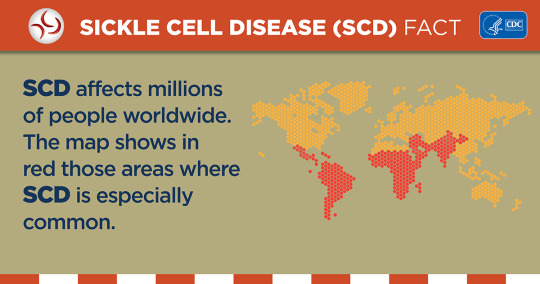
#black love#black history#black positivity#black africans#evolution#science#science side of tumblr#sickle cell anemia#sickle cell disease#sickle cell awareness
46 notes
·
View notes
Text
The best thing today besides Nicki Minaj's new album release is that I read that there is a possible FDA APPROVAL cure/treatment for sick cell disease. This is phenomenal! 🥹🔥🔥
31 notes
·
View notes
Text
Having a chronic illness is a very lonely and isolating experience.
Being in pain and not wanting to burden family and friends means most days I keep how I am feeling to myself because I know others are going through their own life and I don't want to be a stressor to others.
It can all get heavy and hard to manage at times, but I continue to move slowly and give myself grace. I hope you do the same.
22 notes
·
View notes
Text
It's about bloody time!
There is finally an approved treatment for Sickle Cell. Sickle sufferers have been the victims of the rankest kind of medical racism. I hope the news heartens anyone in the community coping with this difficult illness.
7 notes
·
View notes
Photo
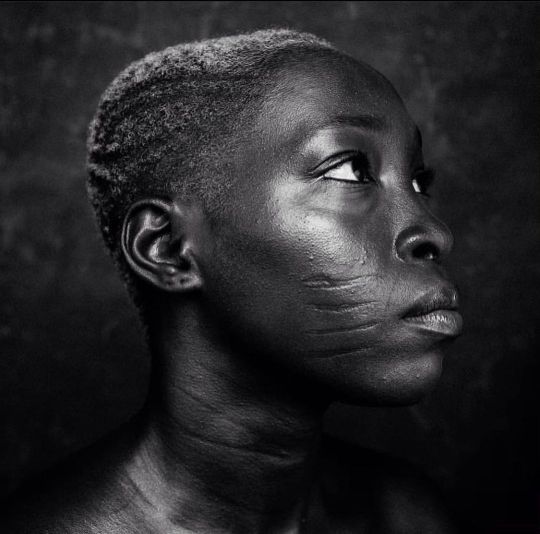

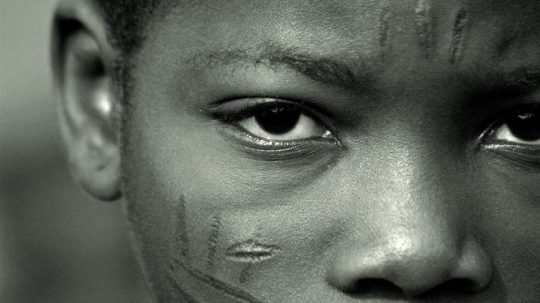
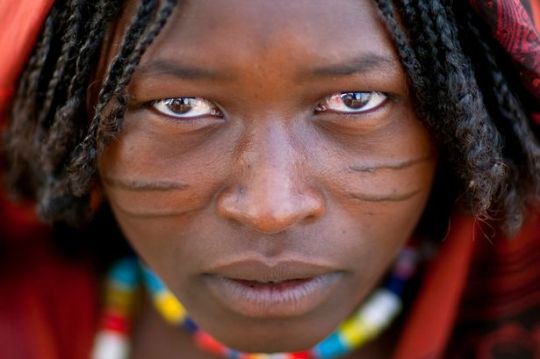

Tribal Marks: The African Tattoo
Tribal marks, also known as scarification, is a traditional practice that has been used by various ethnic groups in Africa for centuries. It involves cutting or scarring the skin in a specific pattern or design, usually on the face, and is typically done during childhood or adolescence.
The marks are used to identify a person's tribe or ethnic group, and can also serve as a form of beauty or adornment.
The tradition of tribal marks varies among different ethnic groups and regions in Africa. In Nigeria for instance, it's mostly practiced by ethnic groups such as the Yoruba, Igbo, and Efik. Each ethnic group has its own unique designs and patterns, and the marks can have different meanings or symbolic significance.
Among the Efik, the marks are used as a symbol of beauty, and young girls would be scarred with intricate designs as part of their initiation into womanhood.
The tradition of tribal marks has been on the decline in recent years, as many people opt for other forms of self-expression or choose not to have them at all.
Some people have abandoned the tradition because of the stigma associated with the marks and discrimination that is faced by those who have them.
Additionally, the government of Nigeria banned the practice in the late 1970s, although enforcement of the ban has been lax and it's still being practiced by some communities.
It's worth noting that the tradition of scarification is not limited to Africa, and has been practiced in other parts of the world, including Oceania, Asia, and the Americas.

Mr Akeem is royal-born, so he has long stripes on his face.
"It is like a football jersey," he quips, adding that they made him popular in the local market.
On a serious note, Mr Akeem says he regards the scars as sacred, and does not believe people should mark their faces just for beautification.
This need for identification through facial marks was also strong in northern Nigeria, especially among the Gobir people of Sokoto state.

Ibrahim Makkuwana's ancestors, pastoralists from Gubur in present-day Sokoto, did not have facial marks. But, he said, as they moved around looking for farming land, "they fought many battles and conquered many places".
They then decided to make distinctive marks on their cheeks, "akin to the ones their animals had, which would help them in identifying their kinsmen during battles", Mr Makkuwana says.
"That was the origin of our marks," he tells the BBC.
But there is also a distinction between the Gobirawas.
Those with six scars on one cheek and seven on the other have both parents from royalty. Those with six marks on both sides have only their mothers from the royal family.
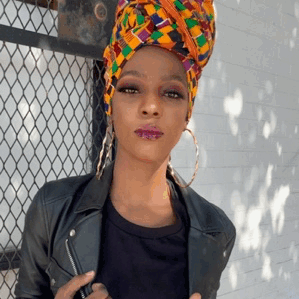
Then there are the children of butchers, with nine scars on one side and 11 on the other, while those with five and six marks on either side trace their lineage to hunters.
As for fishermen, they have distinct marks drawn up to their ears.
Meanwhile, among the Yorubas and Igbos of southern Nigeria, some marks are linked to life and death.
There was a belief in their communities that some children were destined to die before puberty.
Known as Abiku and Ogbanje respectively by the two ethnic groups, these children were believed, by the Yoruba, to belong to a coven of demons living in large iroko and baobab trees.
It was common for women to lose several children at a young age in succession, and it was thought it was the same child, reappearing again and again to torment their mother.
Such children were then marked to make them unrecognisable to their spirit mates so they would stay alive.
Many of these infant deaths are now known to be caused by sickle cell anaemia, an inherited disorder common among African people.

Yakub Lawal in Ibadan in south-western Oyo state, was marked as an Abiku.
"This is not my first sojourn to earth, I have been here before," he says.
"I died thrice, and on my fourth return I was given these marks to stop me from returning to the spirit world," he adds.
Closely related to stories of the Abiku and Ogbanje are those whose marks are in memory of a departed family member or one who has been "reborn".
#facial scars#african scars#tattoos#kemetic dreams#african culture#body art#abiku#yoruba#epik#sickle cell anemia
36 notes
·
View notes
Text
youtube
3 notes
·
View notes
Text
New fic alert!!
An unlikely place to fall in love by brandileigh2003
Summary: Sirius doesn't want to be in the hospital for his summer break, but he meets another patient that gives him hope that he could fall in love.
@wolfstarbingo2023 prompt: anemic sirius
And I've got a BINGO!!!!

#wolfstar#marauders#remus lupin#sirius black#chronic illness#chronically ill sirius#chronically ill remus lupin#cystic fibrosis#sickle cell anemia#fanfic#wolfstar bingo 2023#one shot#1 shot
8 notes
·
View notes
Text
Me weaving sickle cell into my story any chance I get for the sake of “awareness”
2 notes
·
View notes
Text
Study: Sickle cell disease 11 times deadlier than previously recorded

- By Nuadox Crew -
A new study published in The Lancet Haematology journal reveals that the number of deaths caused by sickle cell disease is significantly higher than previously estimated.
The study found that the mortality rate attributed solely to sickle cell disease is 11 times lower than the actual number of deaths when considering various risk factors and associated conditions. Sickle cell disease not only leads to underdiagnosis but also increases the risk of infections and death from conditions such as stroke, heart problems, kidney problems, and pregnancy complications. As a result, doctors may overlook the connection between sickle cell disease and the cause of death when listing it on death certificates.
By combining data on prevalence, birth incidence, and mortality, the study estimated that the total mortality burden of sickle cell disease in 2021 was 373,000 deaths worldwide, compared to the previously reported figure of 34,600 deaths solely attributed to sickle cell disease. The increase in mortality was particularly significant in South Asia and sub-Saharan Africa, where the fatality rates were 67 times and nine times higher, respectively, than previously believed.
The research analyzed global health data from 2000 to 2021 and was part of the Global Burden of Disease 2021 study, led by the Institute for Health Metrics and Evaluation (IHME) at the University of Washington's School of Medicine. The study highlights the rising number of babies born with sickle cell disease and the need for early detection and treatment due to the increased susceptibility to severe conditions and infections.
In 2021, approximately half a million babies were born with sickle cell disease, with over three-quarters of these births occurring in sub-Saharan Africa. When considering the total mortality burden, sickle cell disease was the 12th leading cause of death globally for children under the age of 5. However, it ranked among the top three causes of death in countries such as Portugal, Jamaica, Libya, Oman, and San Marino.
The study emphasizes the importance of improving data collection to track progress on sickle cell disease. Instead of relying solely on mortality data, the researchers used a mathematical algorithm that incorporated data on birth incidence, survival rates, and prevalence to estimate total deaths due to sickle cell disease. This approach provided a more comprehensive understanding of the true burden of the disease and its comparison to other leading causes of death.
The research highlights the urgent need for policymakers and public health advocates to address the underestimated burden of sickle cell disease. The implementation of universal newborn screening, the establishment of public registries for case monitoring, and early intervention treatments can significantly alleviate suffering for the approximately 8 million people living with sickle cell disease.
The study also stresses the importance of universal newborn screening for early diagnosis and management of sickle cell disease. While newborn screening is universal in the United States, many low- and middle-income countries lack a comprehensive screening process. Increasing global awareness and adopting health policies that expand neonatal screening and improve treatment accessibility are crucial for improving health outcomes for individuals with sickle cell disease.
--
Source: Institute for Health Metrics and Evaluation
Full study: Global, regional and national prevalence and mortality burden of sickle cell disease, 2000-2021: a systematic analysis from the Global Burden of Disease Study 2021, The Lancet Haematology (2023) DOI: https://doi.org/10.1016/S2352-3026(23)00118-7
Read Also
Yaw Ansong Jnr speaks on technologies for sickle cell disease patients
#sickle cell disease#sickle cell anemia#sicklecell#blood#health#pediatrics#africa#population health#public health#medicine#haematology#sickle cell#health informatics
6 notes
·
View notes
Note
Hi! I hate having to ask for help, but without it what I'll do .I have no where to go and i am asking for any kind of help for my daughter treatment diagnosed with sickle cell. but the worst were the THREE strokes to the brain. Kindly send donation and share if you're able🙏
i am so sorry but i have no cash to spare. Reblog to spread awareness
3 notes
·
View notes
Note
HelIo! I have been blessed many times, now I try to touch your hearts to help protect my little angel grace diagnosed with sickle cell disease. but the worst were the THREE strokes to the brain.
Thank you once again for getting here and for everything you can do for Grace's well-being. Donate anything please if you're able🙏
don’t have many followers, but hope someone sees :)
3 notes
·
View notes
Text
Watch "The impact of sickle cell disease on communities of color | Basic Black | GBH News" on YouTube
youtube
2 notes
·
View notes
Note
Hi! I hate having to ask for help, but without it what I'll do .I have no where to go and i am asking for any kind of help for my daughter treatment diagnosed with sickle cell. but the worst were the THREE strokes to the brain. Kindly send donation and share if you're able🙏
I apologize, I'm unable to donate, but I am sharing this around!! I wish you the best ❤️❤️❤️
#tags to boost#pls boost#boost the signal#signal boost#sickle cell anemia#sickle cell#sickle cell awareness#please help if you can#please share#donations#fundraising#social justice#health#health conditions and diseases#healthcare#help needed#please help#help#news#important#trending
2 notes
·
View notes
Text
Sickle Cell Awareness Month Wrap Up:
Hey everyone! I know we are at the end of September, and I’m hoping you are all well and healthy. Happy Sickle Cell Awareness Month to you all!
September has been a busy month for me personally and I haven’t gotten a chance to sit down and update my blog. Hello to all the new followers and I see so many of you reblogging my posts and I just want to say thank you and I really appreciate it! 🤍🥹
This month, I turned 31 years old and I’m hoping my year to come will be filled with good health, new opportunities and spreading some good energy.
Another big thing I did was a presentation on Sickle Cell Disease! I got the opportunity to speak on my experience with SCD with the help of my social worker and few others! It was all done virtually, so I’ll copy the link down below if you’re interested in getting to know more about me!
Anyways, stay healthy and safe! Thank you again for all the support. It does not go unnoticed 🙏🏾
youtube
14 notes
·
View notes
Text
Sickle Cell and the Prison Industrial Complex
This article was authored by Professor Simon Dyson (Sickle Cell and the Social Sciences) and Professor Gwyneth Boswell of the University of East Anglia in Norwich, England. It was published in The Howard Journal of Crime and Justice in 2006. Together, Dyson and Boswell highlight seventeen cases between US and UK prisons. Seven of these cases demonstrate that the care of incarcerated people with sickle cell anemia "falls well short of the minimum standards that might reasonably be required." Ten of them involved forced restraints of Warriors resulting in their deaths. To add insult to injury, the people who the criminal injustice system enlists to speak on its behalf oftentimes conflate sickle cell anemia with sickle cell trait, which is the genetic carrier state in which the person who has it is usually healthy. But, as you will read in the article, trait has been weaponized by the carceral state to reinforce preexisting racial discrimination in employment, insurance, and other spheres. And as was written in The New York Times last year, American police when they can will use trait as an alibi for why a Black person happened to die in their custody.
Attached below is a table listing the seventeen cases I mentioned above. Below that is The New York Times article.
#sickle cell awareness#sicklecellwarrior#sickle cell disease#sickle cell anemia#prison abolition#prison industrial complex#prison system#us race relations#american race relations#antiblackness#antiblackracism#social justice#racial justice#racial prejudice#racial abuse#human rights#carceral state#police brutality#police murder
10 notes
·
View notes